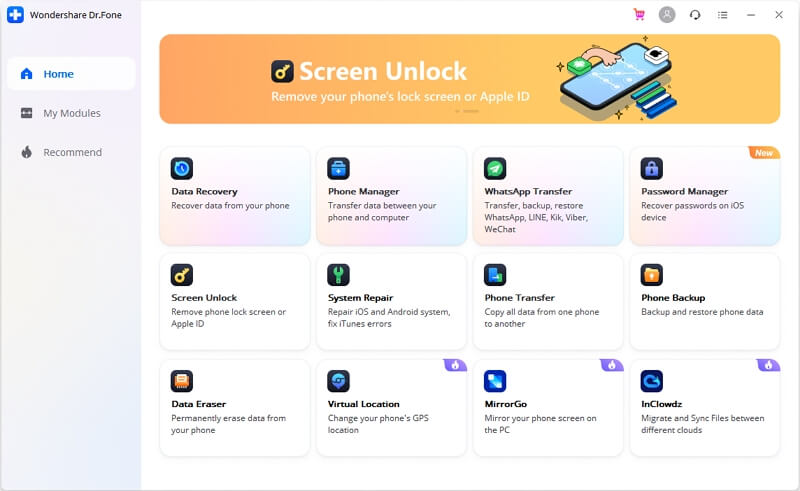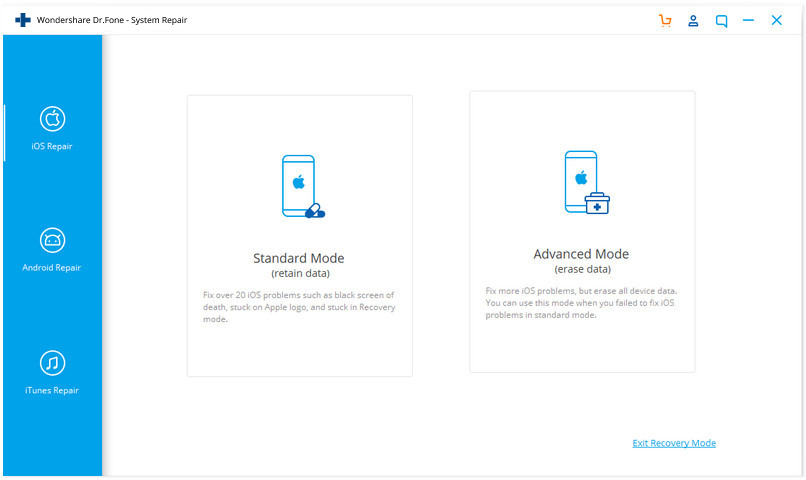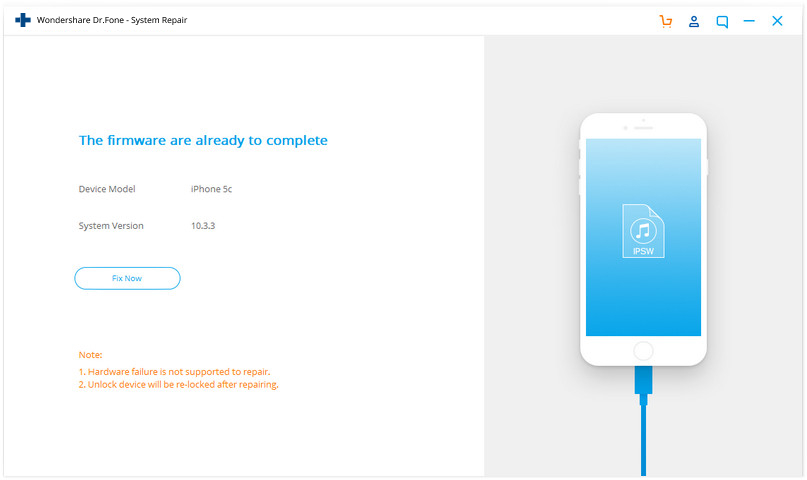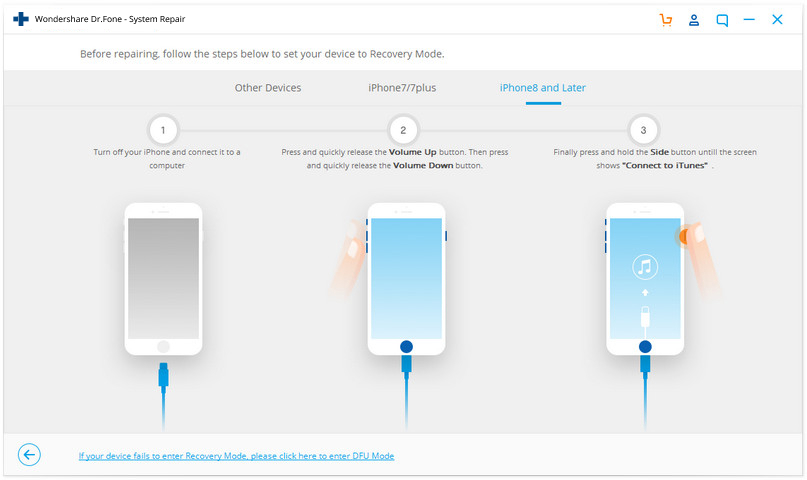Solution for iPhone Black Screen After Updating to iOS 15
Apr 27, 2022 • Filed to: Fix iOS Mobile Device Issues • Proven solutions
Apple makes some of the best gadgets on the planet. Be it hardware quality or software, Apple is right up there with the best, if not the best. And yet, there are times when things go inexplicably wrong.
Sometimes, an update does not go as expected, and you are stuck with a white screen of death, or an update seemingly goes fine but you quickly realize that something is not right. Apps crash more often than not, or you get the infamous black screen after updating to iOS 15. You are reading this because you updated to the latest iOS 15 and your phone displays a black screen after update to iOS 15. These are testing times for a world battling a pandemic, and you do not want to go out to an Apple Store. What do you do? You’ve come to the right place for we have a solution you are going to love.
What Causes Black Screen of Death
There are a few reasons why your phone is showing a black screen after updating to iOS 15. Here are the top three reasons that happens:
- Apple recommends that the minimum battery capacity remaining before attempting an update be 50%. This is to avoid issues on account of a dead battery in the middle of an update process. Generally, the iPhone itself and the software such as iTunes on Windows and Finder on macOS are smart enough to not proceed with update until the battery capacity is at least 50%, but that does not take into account a faulty battery. What this means is that it is possible that before you started update the battery was 50% but since your battery is old, it does not retain capacity as well as it used to, and it died in the middle of the update. It is also possible that the battery is not properly calibrated, and, therefore, showed more charge than it actually held, and died in the middle of the update. All of this will result in a iPhone with a black screen after update. Before you do anything else, just plug the phone into a charger for a good 15-20 minutes and see if that brings the phone to life. If yes, you only had a battery that needed charging. If, however, that does not solve the problem and you are still sitting with a phone with a black screen, it needs a different approach.
- By a stroke of misfortune, a key hardware component in your device died in the middle of an update process. This will present as a black screen that you will eventually realize is a dead device instead. This ought to be handled professionally by Apple, nothing else can be done about it if this be the case.
- Most of us take the shortest route to an update, which is over-the-air or OTA. This is a delta update mechanism that downloads only the necessary files and is, therefore, the least download size. But, sometimes, this can result in some key code missing in the update and can result in a black screen after update or during update. To minimize such issues, it is best to download the full firmware file and update your device manually.
How To Resolve Black Screen After iOS 15 Update
An iPhone is a costly device and with the reputation Apple enjoys, we don’t expect the device to die on us under normal use circumstances. Therefore, when something happens to the device that is not expected, we tend to fear the worst. We think the device has developed faults or the update was botched. These may be, but it pays to keep a level head and try other things to see if it is something to worry about or if this is just one of those times that we can look back upon and have a good laugh. There are a few ways you can try and fix the black screen issue yourself.
Ask Siri To Increase BrightnessYes! It is possible that somehow during the update process, the brightness of your screen was set so low that you cannot see anything and think you are having the infamous black screen. You can call upon Siri and say, “Hey Siri! Set brightness to maximum!” If this was just some weird bug that was causing the issue and not a more serious thing requiring further diagnosis and fixing, your phone should light up at its maximum brightness. You can then ask Siri to “adjust brightness automatically” or change the setting yourself. Problem solved!
You’re Holding It WrongIn case you hold your device in a way that your fingers usually block the light sensors on your device, you might find that you are having a black screen after an update because of it. The update might have set your brightness to automatic or might have changed it according to how you were holding the device when the sensors were activated again, resulting in the black screen. First, you can position your hands differently on the device to see if that helps immediately. If not, you can ask Siri to increase brightness and see if that helps. If it does, problem solved!
Just Restart The Device!Often times, Apple users forget the power of a good restart. Windows users never forget that, Apple users often do. Just restart your device using the hardware key combination relevant to your device and see if that helps. If your screen is no longer dark upon reboot, problem solved!
If You Have An iPhone 8This is a special case. If you have an iPhone 8 that you purchased between September 2017 and March 2018, your device might have a manufacturing bug that can cause this black screen where the phone behaves dead. You can check about this on the Apple website here (https://support.apple.com/iphone-8-logic-board-replacement-program) and see if your device is eligible for a repair.
If these solutions prove to be of no help, it might be time you look into a dedicated third-party software to help you with the black screen issue on your device. One such software is Dr.Fone System Repair, a comprehensive suite of tools designed to help you fix your iPhone and iPad issues quickly and smoothly.
We call it the best way because it is the most comprehensive, most intuitive, least time-consuming way to get about fixing your phone after a botched update resulting in black screen after update.
The tool is specifically designed to help you with two things:
- Fix issues with your iPhone arising out of a botched update done through over-the-air method or using Finder or iTunes on a computer in a worry-free manner in just a few clicks
- Resolve issues on the device without deleting user data to save time once the issue is fixed, with option for a more through repair necessitating deletion of user data.
Step 1: Download Dr.Fone System Repair (iOS System Recovery) here: https://drfone.wondershare.com/ios-system-recovery.html

Step 2: Launch Dr.Fone and select System Repair module
Step 3: Connect the phone to your computer using the data cable and wait for Dr.Fone to detect it. Once it detects your device, it will present two options to choose from - Standard Mode and Advanced Mode.

Standard Mode helps with fixing issues without deleting user data. Advanced Mode is to be used only when Standard Mode does not fix the issue and using this mode will delete user data from the device.
Step 4: Choose Standard Mode. Dr.Fone will detect your device model and the iOS firmware currently installed, and present before you a list of compatible firmware for your device that you can download and install on the device. Select iOS 15 and proceed.

Dr.Fone System Repair (iOS System Recovery) will then download the firmware (about 5 GB on average). You can also download the firmware manually should the software fail to download the firmware automatically. The download link is thoughtfully provided right there for convenience.

Step 5: After successful download, the firmware will be verified, and you will see a screen with the button that reads Fix Now. Click the button when you are ready to fix the black screen on your device after update to iOS 15.
You will likely see your device come out of the black screen of death and it will be updated to the latest iOS 15 once again and hopefully this will resolve your issues and give you a stable iOS 15 update experience.
Device Not Recognized?
If Dr.Fone is unable to recognize your device, it will show that information and give you a link to resolve the issue manually. Click that link and follow the instructions to boot your device in recovery mode/ DFU mode before proceeding further.

When the device gets out of black screen, you can use the Standard Mode to fix iOS 15 update issues. Sometimes, even with an update, some things do not sit right and cause issues with old code existing on the device. It is best to fix the device again in such cases.
Advantages Of Using Third-Party Tool Such As Dr.Fone System Repair (iOS System Recovery)

Dr.Fone - System Repair
Fix iPhone Stuck on Apple Logo without Data Loss.
- Only fix your iOS to normal, no data loss at all.
- Fix various iOS system issues stuck in recovery mode, white Apple logo, black screen, looping on start, etc.
- Fixes other iPhone error and iTunes errors, such as iTunes error 4013, error 14, iTunes error 27,iTunes error 9, and more.
- Works for all models of iPhone, iPad, and iPod touch.
- Fully compatible with the latest iOS version.

One might wonder why to pay for something that can be done for free, considering Apple provides iTunes on the Windows operating system and there is functionality embedded within Finder on macOS for Apple computers. What advantage might third-party tools such as Dr.Fone System Repair (iOS System Recovery) have over official Apple ways?
As it turns out, there are several advantages to using Dr.Fone System Repair (iOS System Recovery) to fix issues with the iPhone or iPad should something come to go wrong.
- There are several models of iPhone and iPad in the market today, and these models have different ways to access functions such as hard reset, soft reset, entering the DFU mode, etc. Do you remember all of them (or even want to?) or would you rather just use a dedicated software and get the job done conveniently and easily? Using Dr.Fone System Repair (iOS System Recovery) means that you just connect your device to the software and it does the rest.
- At present, Apple does not offer a way to downgrade iOS using iTunes on Windows or Finder on macOS once you update to the latest iOS. This is an issue for a lot of people across the world. You might wonder why downgrade, and it might not sound like a huge thing, but it is important to be able to downgrade after updating to the latest iOS in case after the update you realize that one or more apps that you need to use are not working anymore after the update. This is more common than you think, and mostly happens with banking apps and enterprise apps. What do you do now? You cannot downgrade using iTunes or Finder. You either take your device to an Apple Store so they can downgrade the OS for you, or, you stay safe at home and use Dr.Fone System Repair (iOS System Recovery) with its ability to allow you to downgrade your iPhone or iPad to an earlier version of iOS/ iPadOS that was working just fine for you. This is critical to a smooth workflow, today more than ever, when we rely on our devices in an unprecedented way.
- If you do not have Dr.Fone System Repair (iOS System Recovery) by your side to help you should something go wrong during any update process, you have only two options before you - either to take the device to an Apple Store amidst the raging pandemic or to try and get the device to enter recovery mode or DFU mode to update the OS. In both cases, you will likely lose all your data. With Dr.Fone System Repair (iOS System Recovery), depending on severity of issue, there is a fighting chance you will save both time and your data, and just get on with your life in a matter of minutes. All with the ease of connecting your phone to the computer with a cable and pressing a few buttons on screen.
- What to do if your device is unrecognized? Your only option is to take it to the Apple Store, right? You cannot use iTunes or Finder if they refuse to recognize your device. But, with Dr.Fone System Repair (iOS System Recovery), there is a possibility you will be able to fix that issue as well. In short, Dr.Fone System Repair (iOS System Recovery) is your go-to tool for whenever you want to update your iPhone or iPad or when you want to fix issues with an update gone wrong.
- Dr.Fone System Repair (iOS System Recovery) is the easiest, simplest, most comprehensive tool available for you to use to fix iOS issues on Apple devices including downgrading iOS on devices without the need to jailbreak them.
iPhone Problems
- iPhone Hardware Problems
- iPhone Home Button Problems
- iPhone Keyboard Problems
- iPhone Headphone Problems
- iPhone Touch ID Not Working
- iPhone Overheating
- iPhone Flashlight Not Working
- iPhone Silent Switch Not Working
- iPhone Sim Not Supported
- iPhone Software Problems
- iPhone Passcode Not Working
- Google Maps Not Working
- iPhone Screenshot Not Working
- iPhone Vibrate Not Working
- Apps Disappeared From iPhone
- iPhone Emergency Alerts Not Working
- iPhone Battery Percentage Not Showing
- iPhone App Not Updating
- Google Calendar not Syncing
- Health App Not Tracking Steps
- iPhone Auto Lock Not Working
- iPhone Battery Problems
- iPhone Media Problems
- iPhone Echo Problem
- iPhone Camera Black
- iPhone Won't Play Music
- iOS Video Bug
- iPhone Calling Problem
- iPhone Ringer Problem
- iPhone Camera Problem
- iPhone Front Camera Problem
- iPhone Not Ringing
- iPhone Not Sound
- iPhone Mail Problems
- Reset Voicemail Password
- iPhone Email Problems
- iPhone Email Disappeared
- iPhone Voicemail Not Working
- iPhone Voicemail Won't Play
- iPhone Can't get Mail connection
- Gmail Not Working
- Yahoo Mail Not Working
- iPhone Update Problems
- iPhone Stuck at the Apple Logo
- Software Update Failed
- iPhone Verifying Update
- Software Update Server Couldn't Be Contacted
- iOS update Problem
- iPhone Connection/Network Problems






Alice MJ
staff Editor
Generally rated4.5(105participated)